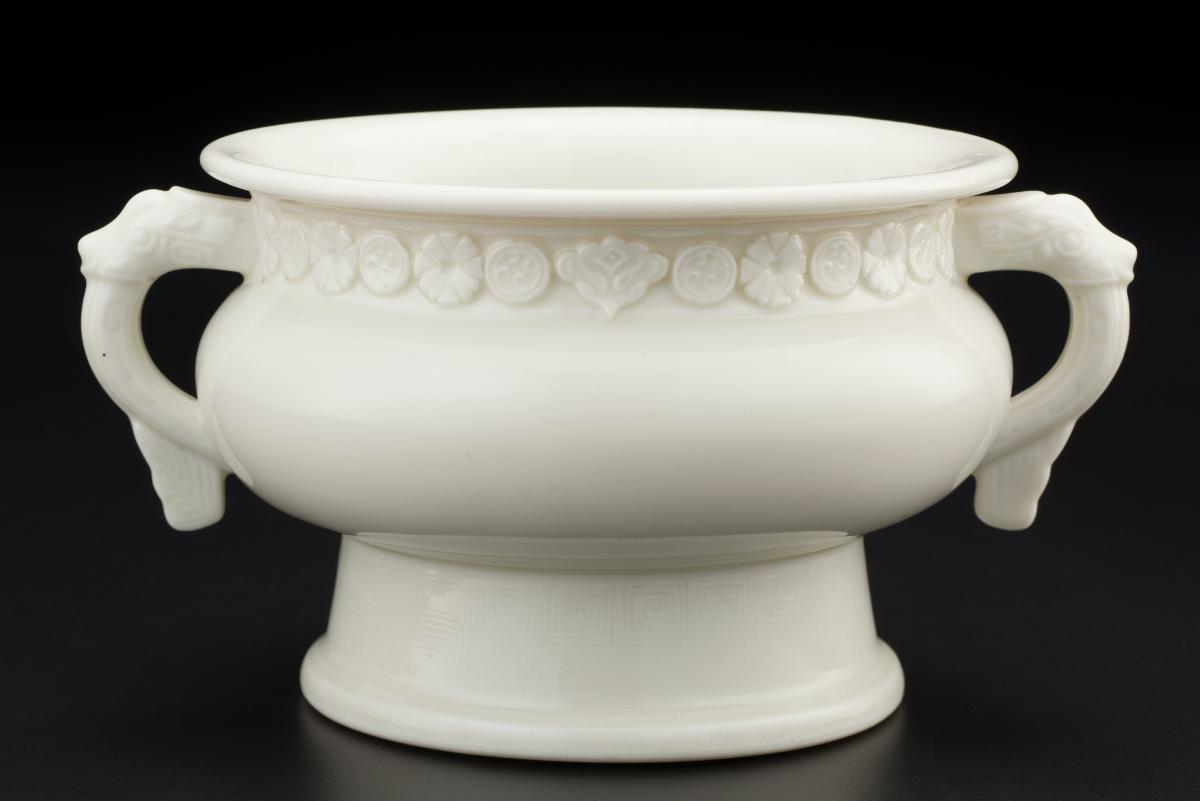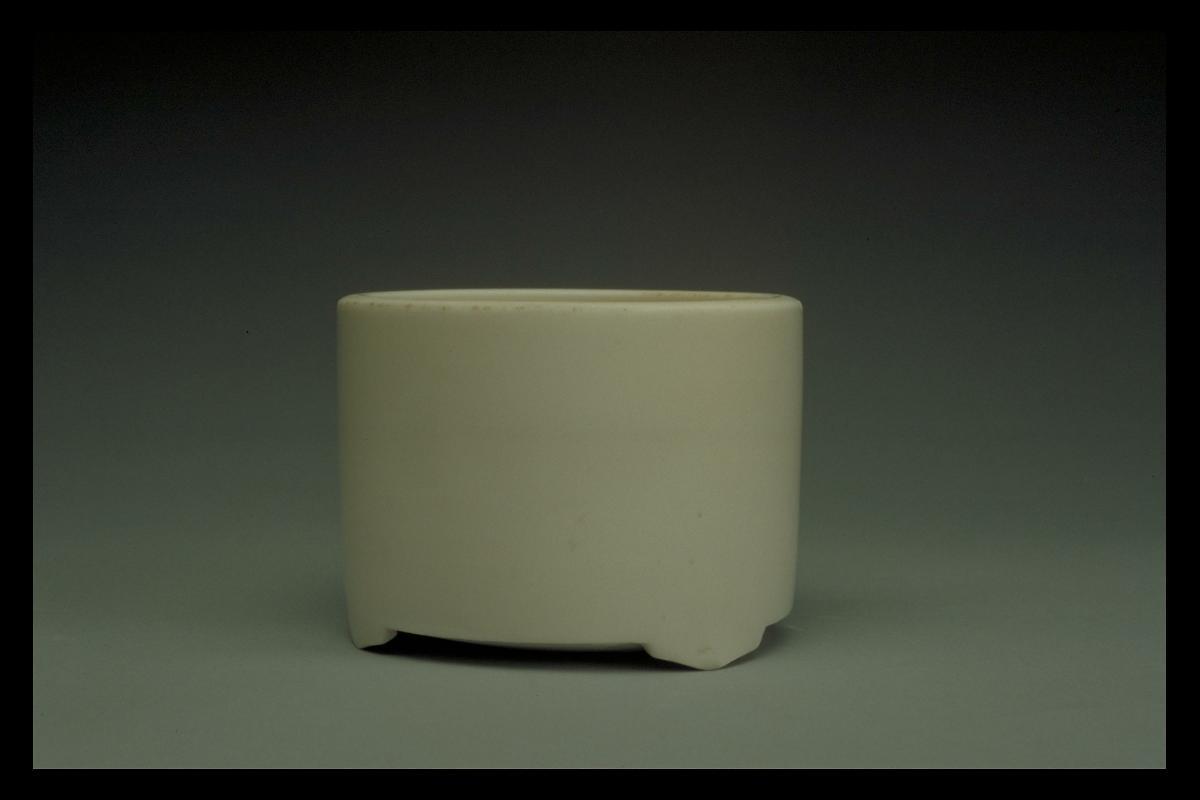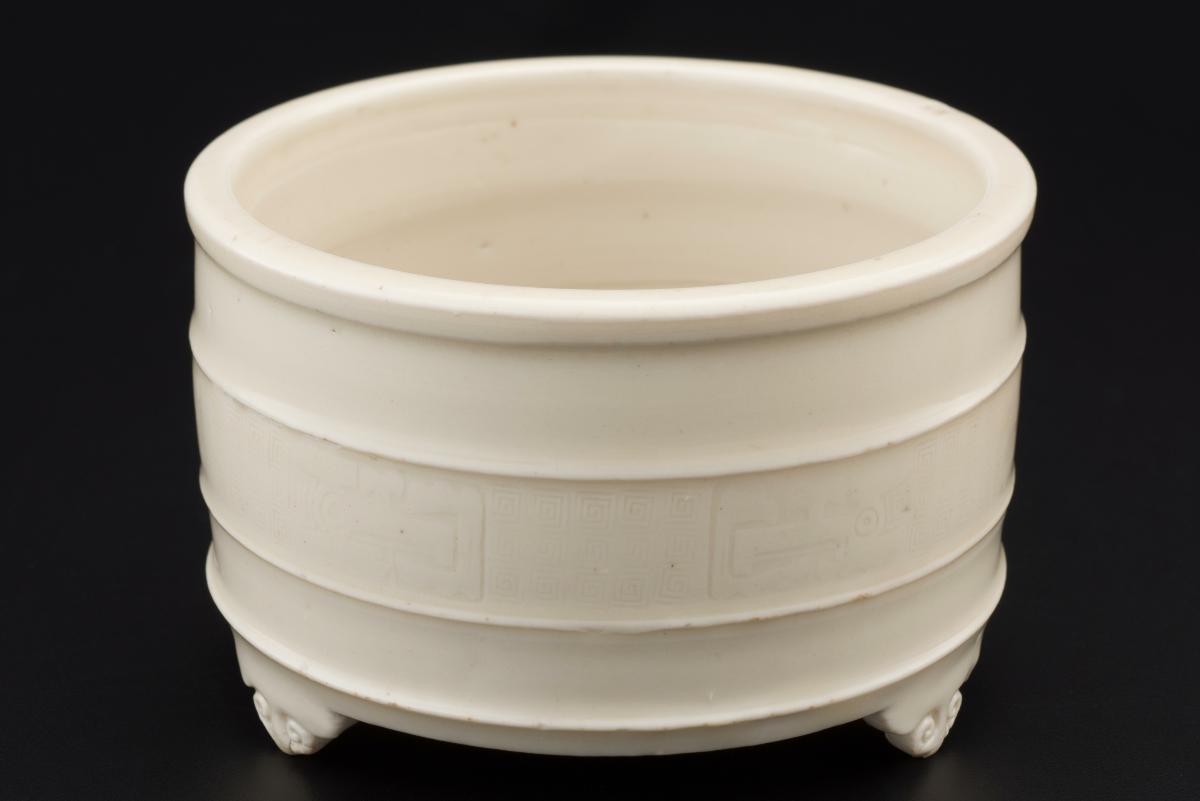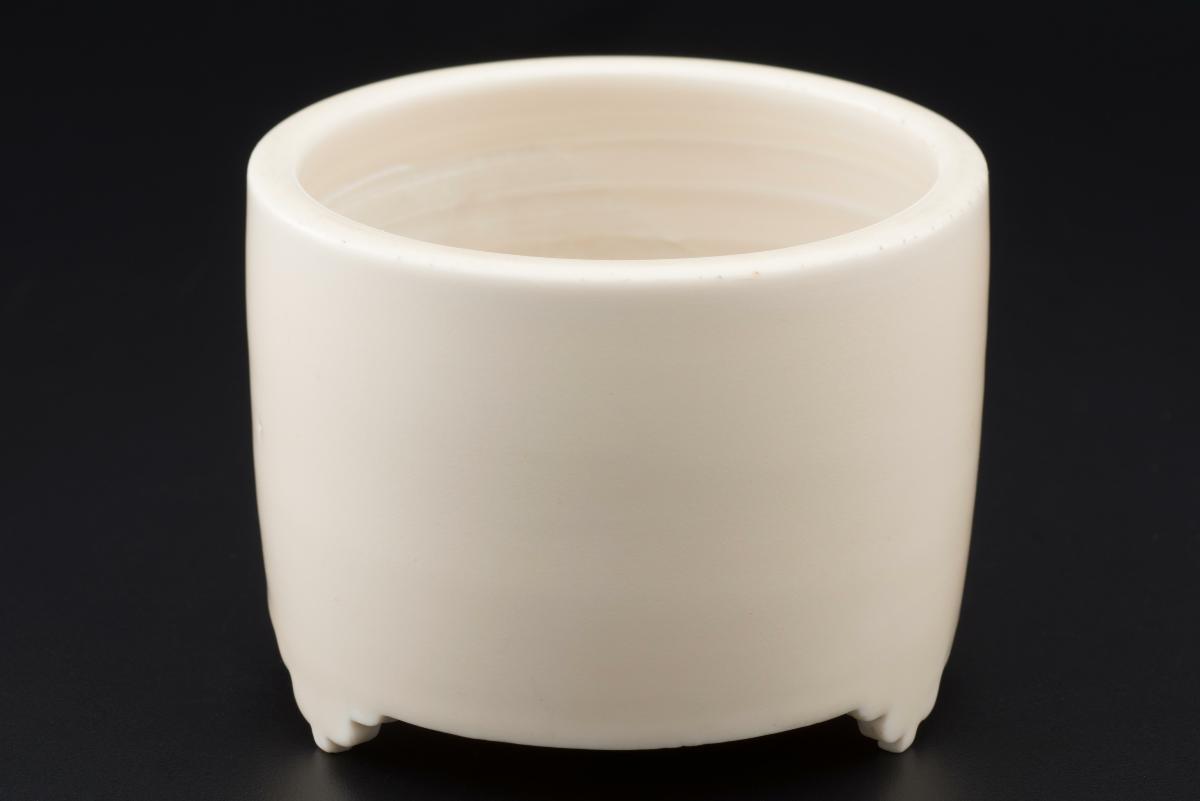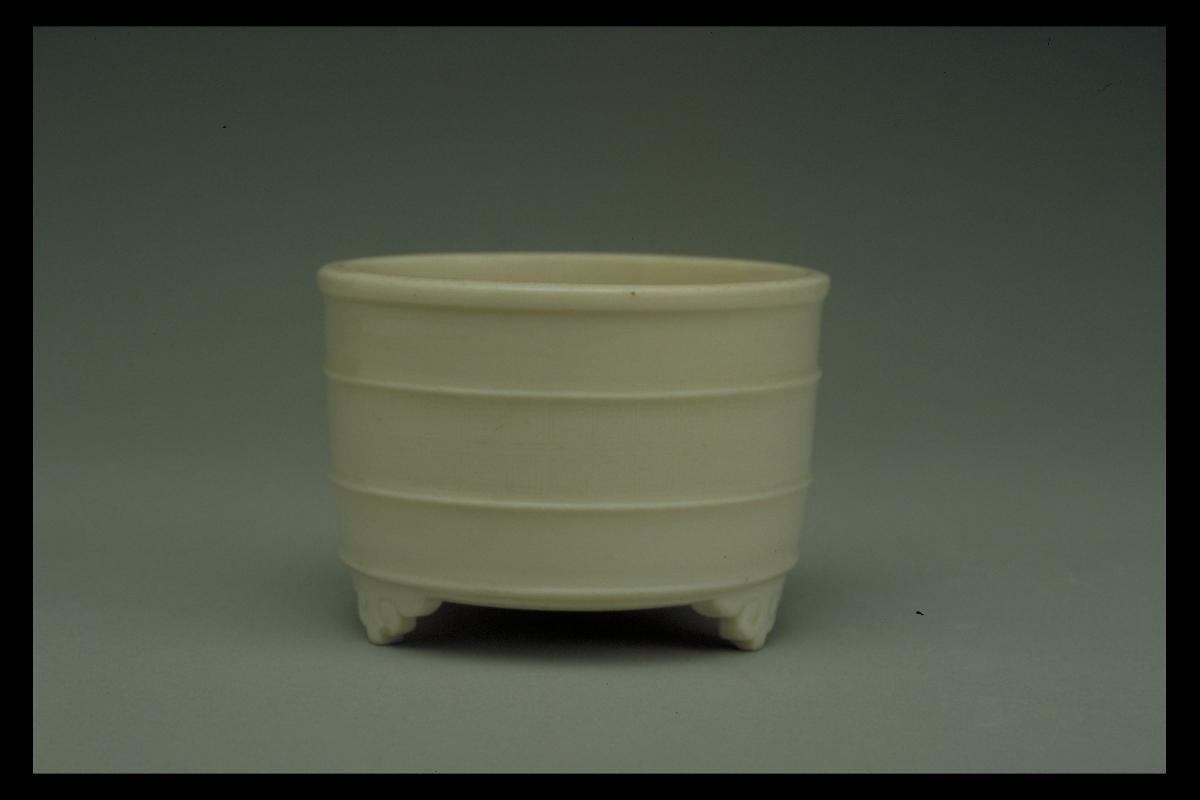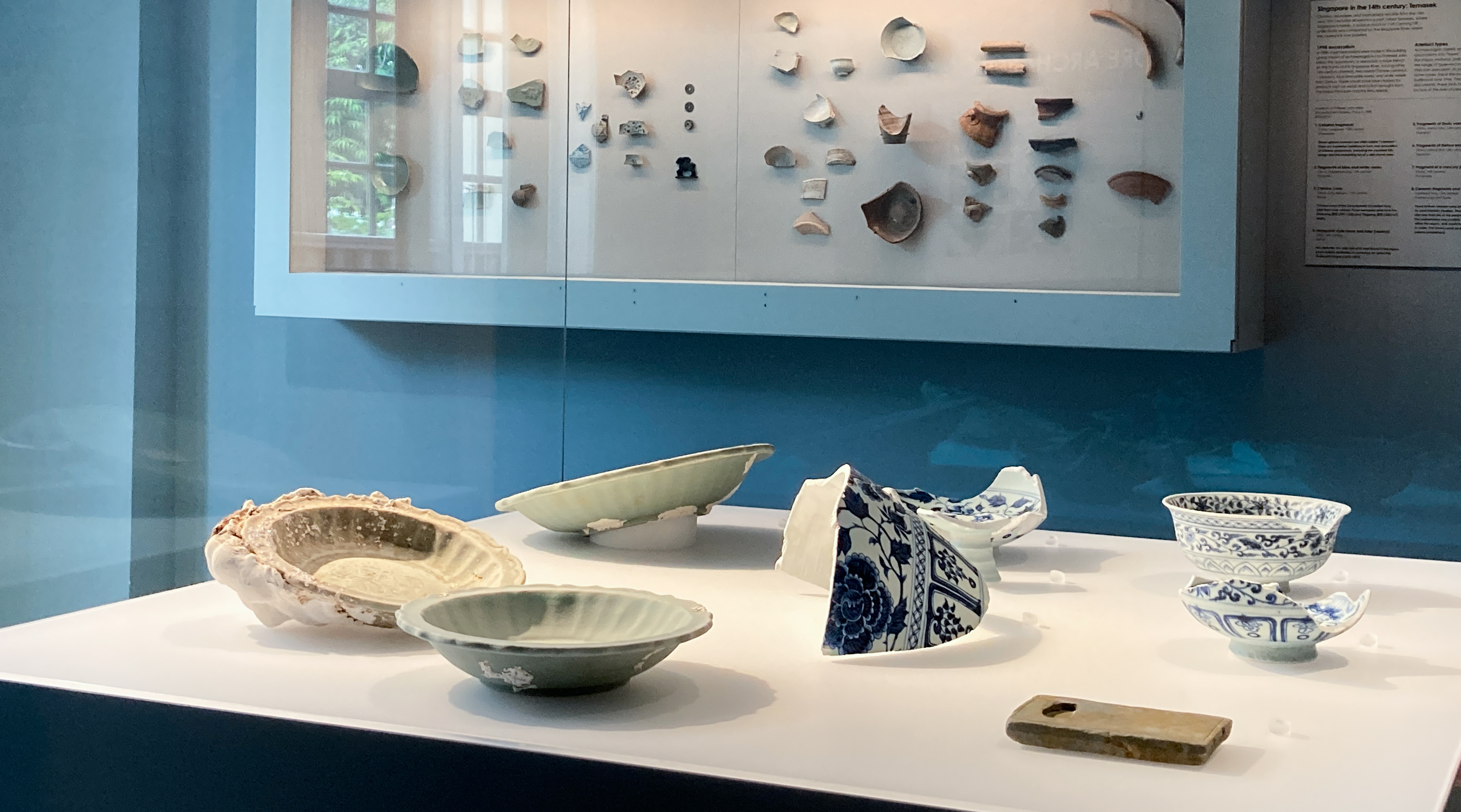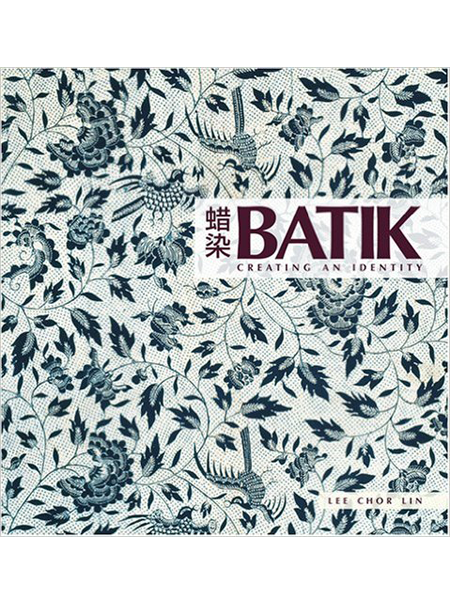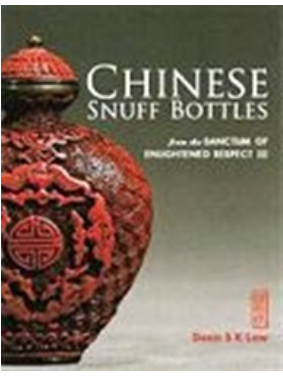This archaic-style vessel has an everted mouth rim, large handles with stylised monster masks, and a tall foot. The decoration includes a band of applied floral medallions around the neck and subtle bands of incised or stamped 'leiwen' (‘thunder pattern’) or squared spirals around the foot. Archaism was a style associated with Song dynasty (960–1279) ceramics, which took their inspiration from ancient ritual bronzes of the Shang (c.1700–1027 BCE) and Zhou (1027– 256 BCE) dynasties. By the early Qing (1644-1911) dynasty, the archaic-style ceramic wares of the Song and the 15th century provided additional sources of inspiration for archaism at the imperial kilns. However, the sources for provincial Dehua potters remain unclear and contemporary bronze and porcelain censers in the archaic style, in this case the ancient gui ritual food vessel of the Shang, should not be ruled out. Censers would have been used for burning incense at the altar, as part of a set of ritual vessels, which included flower vases, candlesticks and offering dishes. A complete set of Dehua altar vessels would have made an impressive impression.Dehua, located on the southeast coast of Fujian province, is well known for its production of white porcelain, known to Europeans as 'blanc de chine'. The earliest Dehua porcelain was produced as early as the 14th century but the production and quality of these porcelain peaked around the 17th and 18th centuries.




